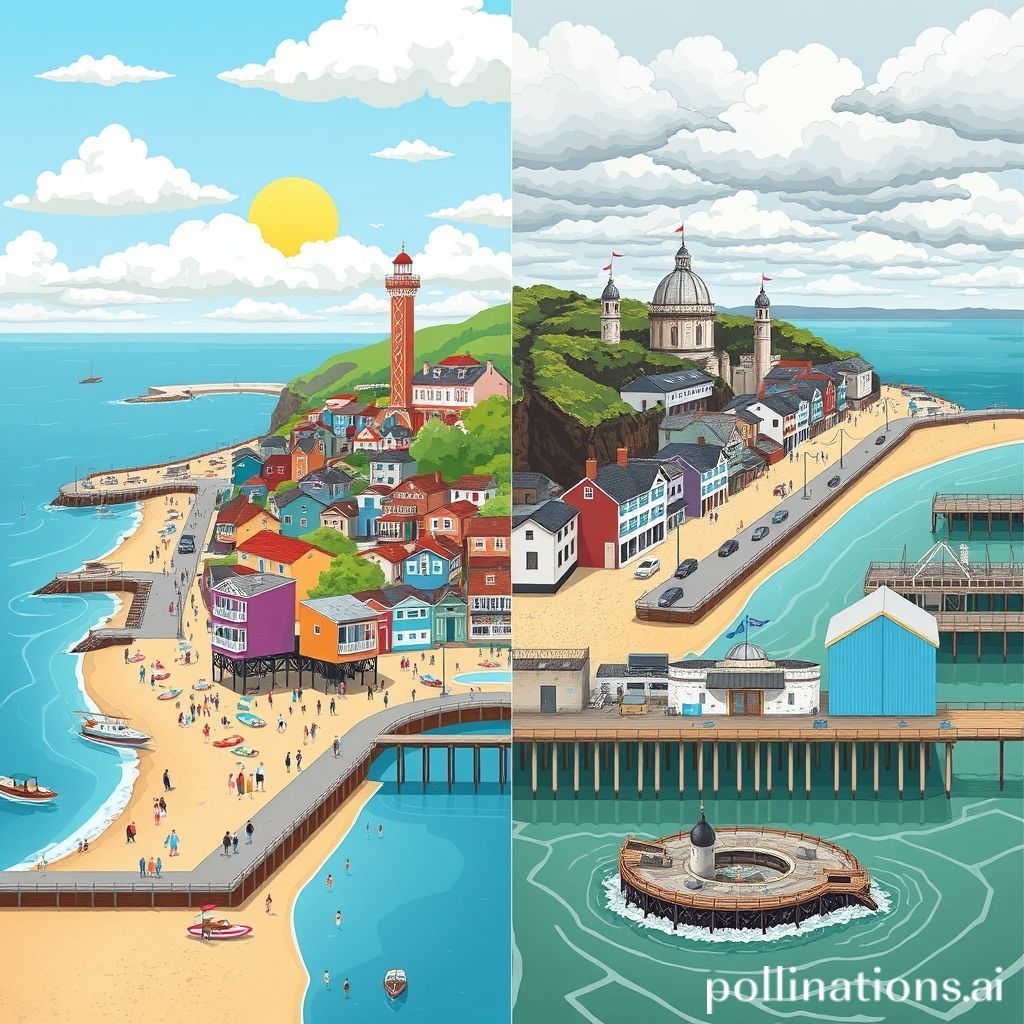Britain's best and worst seaside towns

Britain's best and worst seaside towns
Britain's Best and Worst Seaside Towns: Sun, Sand, and...Surprises?
Ah, the British seaside. A quintessential part of our culture, evoking memories of sticky rock, donkey rides, and the ever present squawk of seagulls. But let's be honest, not all seaside towns are created equal. Some shimmer with charm and nostalgia, while others well, let's just say they've seen better days. So, grab your bucket and spade as we dive into a balanced look at Britain's best and worst seaside towns, exploring what makes them tick and offering a dose of honest, helpful advice for your next coastal adventure.
Shining Stars: Seaside Towns That Still Sparkle
Let's kick things off with the good stuff. These towns have managed to retain their appeal, charm, and offer a fantastic experience for visitors of all ages.
St. Ives, Cornwall: This Cornish gem is consistently ranked among the best, and for good reason. Its picturesque harbour, golden beaches like Porthmeor, and vibrant art scene centred around the Tate St Ives make it a cultural haven. The quality of the food is fantastic too, with fresh seafood readily available. It's beautiful yes, but that beauty does come at a price. St Ives can be very expensive to visit, particularly in peak season, and incredibly crowded.
Whitby, North Yorkshire: Steeped in history and Gothic charm, Whitby is a truly unique destination. Explore the dramatic ruins of Whitby Abbey, immortalized in Bram Stoker's Dracula, wander through its cobbled streets, and indulge in some of the best fish and chips in the country. The atmosphere is incredible, especially during the Goth Weekend. On the downside, the steep climbs can be challenging for some, and parking can be a nightmare.
Southwold, Suffolk: Southwold exudes a refined elegance. Famous for its pastel coloured beach huts, Adnams brewery, and a pier brimming with quirky amusements, it offers a gentler pace of life. The sandy beach is perfect for families, and the town itself is filled with independent shops and delightful tea rooms. Be warned, Southwold is undeniably pricey. If you are looking for a budget friendly seaside trip, this might not be your place.
Abersoch, Gwynedd: A haven for watersports enthusiasts and beach lovers, Abersoch in Wales boasts stunning scenery, clear waters, and a lively atmosphere. Sailing, windsurfing, and paddleboarding are all popular activities, and the beaches are some of the finest in Wales. The village itself is trendy with some great shops and restaurants. Its popularity translates into busy beaches and potentially difficult parking, especially in the summer months.
Places That Could Do Better: Facing the Harsh Realities
Now, let's talk about the towns that haven't quite kept up with the times. These places often suffer from a combination of economic decline, lack of investment, and a general air of neglect.
Blackpool, Lancashire: While Blackpool still holds a special place in many hearts, it's undeniable that the town has struggled in recent years. While the Pleasure Beach and illuminations remain iconic, certain areas can feel run down, and the focus on cheap thrills can overshadow its historical charm. Blackpool certainly is improving with major investment, but it still faces significant challenges.
Morecambe, Lancashire: Once a thriving resort, Morecambe has suffered from a decline in tourism. While the views across Morecambe Bay are stunning, the town itself feels somewhat neglected, with many empty shops and a lack of investment. The revamp of the promenade and the arrival of the Eden Project North could signal a brighter future, but there's still a long way to go.
Rhyl, Denbighshire: Rhyl has faced its share of challenges, with a reputation for being a less desirable seaside destination. While efforts have been made to improve the seafront, the town still struggles with a lack of investment and a somewhat dated feel. Though there are some nice beaches, the overall experience is not one that would appeal to most holidaymakers.
Comparing Coastal Contenders
Here's a handy table comparing some of the key aspects of the towns we've discussed:
| Feature | St. Ives | Whitby | Southwold | Abersoch | Blackpool | Morecambe | Rhyl |
|||||||||
| Beaches | Excellent| Good | Excellent | Excellent| Decent | Decent | Decent |
| Scenery | Stunning | Dramatic| Charming | Stunning | Average | Stunning | Average |
| Activities | Arts, Beach | History, Beach | Relaxing, Beach| Watersports | Amusements| Walking | Amusements |
| Price | Very High| Moderate| High | High | Low | Low | Low |
| Atmosphere | Lively | Gothic | Relaxed | Lively | Chaotic | Quiet | Dated |
| Overall Rating | A+ | A | A | A | C | C | D |
A Personal Reflection on the British Seaside
Growing up, the seaside was synonymous with summer holidays. But even as a child, I could sense the disparities between different coastal towns. Some sparkled with vibrancy, offering a treasure trove of memories, while others felt like forgotten relics of a bygone era.
The British seaside is at a crossroads. Some towns are thriving, reinventing themselves for a new generation of tourists. Others desperately need investment and vision to recapture their former glory. Whether you're drawn to the glitz of a classic resort or the quiet charm of a hidden gem, there's a seaside town out there for everyone. Do your research, manage your expectations, and remember that even the "worst" seaside towns often hold a certain quirky appeal, a reminder of a simpler, perhaps slightly faded, past. So pack your bags, embrace the bracing sea air, and discover the magic of the British coast. You might just be surprised at what you find.
Comments
Post a Comment